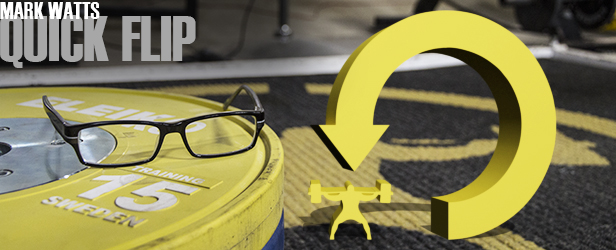
Programming: Exercise Selection
When creating an exercise pool for you program, you must base it off the equipment you have available. This is something I learned from Tood Hamer. Don’t write one line of your program until you know all of the equipment you have at your disposal. Another factor with selection of the exercise pool is having too many exercises within that pool.
There is a fine line between having enough variety to elicit a training effect and being able to become proficient at the movement.
Benefits of Exercise Variety
- Allows athletes to break through plateaus and avoid over training
- Address weak points by adding special exercises
- Keeps athletes engaged throughout the training cycle.
Possible Negatives of Exercise Variety
- Limited exposure to core lifts within a program
- Reduction of repetitions for those key lifts
- Tracking becomes more complicated
- More exercises can mean more complex periodization schemes
Something I got from Grey Cook (I adapted the last two) deals with the progression of exercise skill acquisition.
- Level 1 – Competency
- Level 2 – Proficiency
- Level 3 – Complexity
- Level 4 – Mastery
So what I learned was to create an exercise pool based off one exercise for each movement with two additional exercises to add variety, BUT specifically designed to address the most common technique discrepancies and weak points for most athletes.
Movement Patterns
- Triple Extension (3XT)
- Double Leg Push
- Double Leg Pull
- Single Leg Push
- Single Leg Pull
- Horizontal Push
- Horizontal Pull
- Vertical Push
- Vertical Pull
- Rotational
Within each category, there are literally hundreds of variation that can be added. There are also specific exercises that could fit into multiple categories. Using these as a guideline can help maintain balance in a program.
- Select three exercises from each category
- The first should be a testable movement
- The second two should address common weaknesses, address technique issues, and/or be less CNS intensive (for deloads).
Match the Movement with the Weekly Emphasis
We finally came up with three different types of weeks for a normal meso-cycle (four including an intro week for some movements). We would plug in the exercise variation with the particular week. This wasn’t exact. Some variations would carry over multiple weeks.
Double Leg Push Example
- Intro – DB Goblet Squat
- Base – Front Squat
- Load – Back Squat
- Deload – Box Squat
- Test – Back Squat
Typical 4 Week Meso-Cycle
- Week 1 – Base
- Week 2 – Load
- Week 3 – Deload
- Week 4 – Test
Typical 8 Week Meso-Cycle
- Week 1 – Intro
- Week 2 – Base
- Week 3 – Load
- Week 4 – Deload
- Week 5 – Base
- Week 6 – Load
- Week 7 – Deload
- Week 8 – Test
Choosing the Right Exercises
This is all going to depend on the coach and the equipment. Most people know that I am a huge advocate for accommodating resistance. If it is available I am going to utilize it. Anytime you incorporate a movement and its variations, you must ask a few questions.
- Is it safe?
- Can I teach, critique, and fix it?
- Do I have the equipment to do it?
- Is this the best possible option to elicit the best possible training effect?
Tying It Together
The last example I will used deals with the clean example. If the main triple extension movement is the hang clean, then the other two movements should help the technique of the main lift, address weak points or both.
- Base – Hang Clean
- Load – Clean from Floor
- Deload – Clean from Blocks
- Test – Hang Clean
I am not saying that the hang clean is more beneficial than cleaning from the floor. That is for you to decide. For football, we would flip flop the emphasis a few time a year.
- Pre-season – Hang
- Post-season – Floor
- Spring Off-season – Hang
- Spring Ball – Floor
Hope this helps. Next few logs will be a four part series based on Daniel Coyles Talent Code series and how it relates to sports performance.








